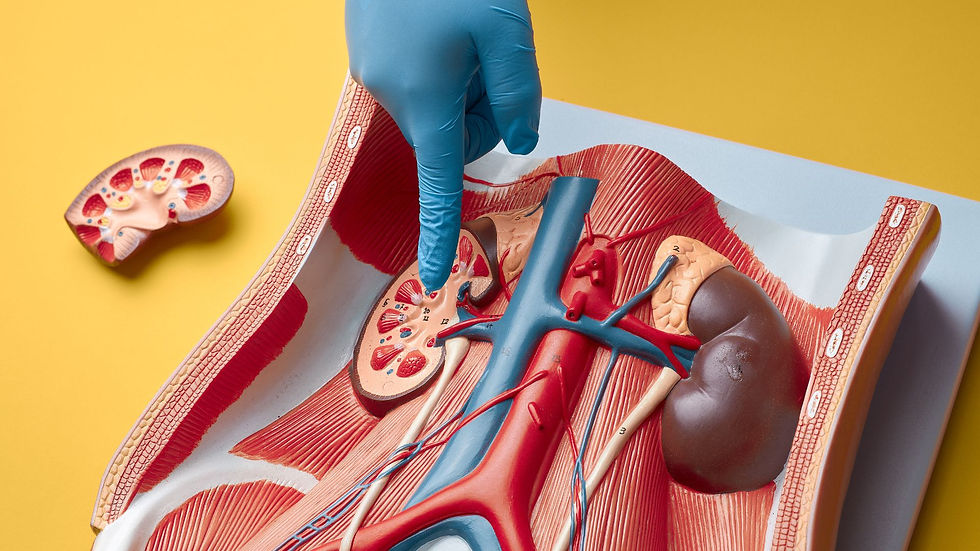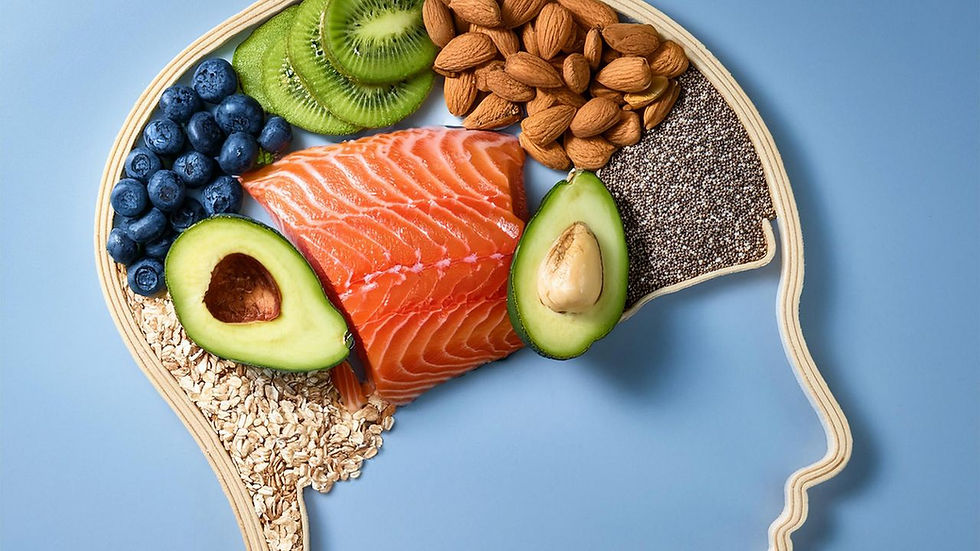What are "food groups" and how will they support weight-loss?
- Daniel Smith
- May 28, 2022
- 3 min read
Updated: Nov 1, 2022
There is a lot of discussion about food groups and how it helps to support a healthy diet and weight loss. But, what does this actually mean?
Food can be divided into four main groups. These groups are: carbohydrates, fruits and vegetables, proteins and dairy, and finally, sugars and fats.
Each food group provides something that are bodies need to move, grow and repair. Too much of one particular group will deprive the body of essentials from the other groups. The key is ensuring you have the correct amount from each group - this is the healthy balanced diet.
The four groups are typically organised into a pyramid and it shows the distribution of what we need. The bottom of the pyramid, we need more of these foods, the top of the pyramid we need fewer of these foods.

The illustration above shows the balance of what we need over the course of a day. More of the carbohydrates and fewer of the fats and sugars.
1. Carbohydrates:
Carbohydrates give you energy, calcium and B vitamins. These could be in servings of: pasta, rice, oats, potatoes and sweet potatoes or noodles, yam, couscous, bread, barley and rye. Breakfast cereals are also a carbohydrate and many contain extra iron too.
What could one portion look like?
• One slice of bread
• Six tablespoons of breakfast cereal or porridge
• Four wholewheat crisp breads
• Six tablespoons of pasta, rice, or couscous
• Two small new potatoes
• Two tablespoons mashed sweet potato
Aim for brown foods, such as brown rice or bread, as these are ricer in fibre and release energy slowly leaving you feeling fuller for longer.
2. Fruits and vegetables:
Fruits and vegetables, whether fresh, frozen, tinned or dried, are brilliant for our diets. They are full of health-giving vitamins, antioxidants and fibre. By eating a wide variety of fruits and vegetables, you will be getting a range of the important vitamins and minerals that our bodies need.
What does one portion look like?
• One apple, orange, pear or banana or similar-sized fruit
• Two smaller fruits such as plums, satsumas or kiwi fruit
• A handful of small fruits such as grapes, cherries or berries
• Half to one tablespoon of dried fruits such as raisins, prunes or apricots
• A slice of large fruit such as a piece of melon or a slice of pineapple
• Three heaped tablespoons of raw, cooked, frozen or canned vegetables
• A dessert bowl of salad
Aim to have 2-3 portions of fruit and 2-3 portions of vegetables a day.
3. Protein and diary:
Proteins help our bodies to grow and repair itself. Protein is found in meat, fish and in eggs, nuts, beans, lentils, peas, dahl, Quorn and soya. These foods also provide us with iron and other vitamins and minerals.
What does one portion look like? • Two slices of cold ham, turkey and chicken • One medium chicken breast • Two sausages • Three bacon rashers • One beefburger • One fillet of fish or fish steak • One small can of tuna, salmon, mackerel, sardines • Four fish fingers • One cup of cooked lentils or beans • Half a large can of beans, chickpeas or lentils • A 100g portion of tofu or Quorn
Diary is food made from milk products and they are packed with calcium, protein and vitamins (such as vitamins A, D and B12). These products keep our bones and teeth healthy. Our bodies easily absorb the calcium from these foods.
What does one portion look like?
• One glass of milk
• One pot of yoghurt or fromage frais
• One matchbox-sized piece of cheese or two triangles
• Half a tin of low-fat custard.
4. Fats, sugars and oils:
These foods are energy rich. Is it is important not to have too many foods from this group as they are high in calories but do not have much overall nutrition for our bodies.
Try to keep foods such as: butter, margarine, cooking oils and salad dressings to a minimum and save chocolate, crisps, sugary soft drinks, sweets, jam, cream, cakes, pudding, biscuits and pastries for the occasional well-deserved treat.
Remember, having the right amount from each of food groups will support your slim transformation journey.




Comments